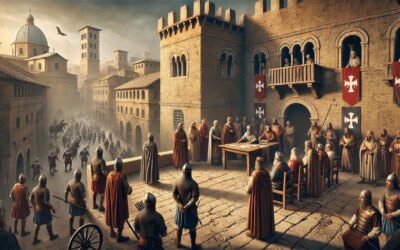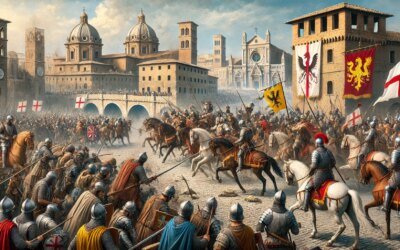Introduction: The Dawn of a New Empire
On Christmas Day in the year 800 AD, an event occurred in Rome’s St. Peter’s Basilica that would reverberate throughout history: Charlemagne, King of the Franks and Lombards, was crowned Emperor of the Romans by Pope Leo III. This moment symbolized the rebirth of the Western Roman Empire, centuries after its fall, and set the foundations for medieval Europe’s political and religious landscape.
The Man Who Would Be Emperor
Charlemagne (c. 742–814), meaning “Charles the Great,” had forged a vast empire through military conquest, strategic alliances, and administrative reforms. By the end of the 8th century, he ruled over modern-day France, Germany, northern Italy, and beyond. His rule brought stability and a revival of learning known as the Carolingian Renaissance.
Rome at the Turn of the Millennium
By 800 AD, Rome was a shadow of its ancient glory, politically fragmented and vulnerable. The papacy, beset by internal and external threats, needed a strong protector. Pope Leo III, embroiled in a local political crisis, found such an ally in Charlemagne, who had intervened decisively to restore order.
The Coronation Ceremony
According to later accounts, Charlemagne knelt in prayer at St. Peter’s Basilica when Pope Leo III unexpectedly placed a golden crown on his head, proclaiming him “Emperor of the Romans.” Whether the act was truly a surprise remains debated among historians, but the symbolism was clear: Charlemagne was now the heir to the ancient emperors, bridging the legacy of Rome with the Christian West.
Political and Religious Implications
The coronation established the precedent of papal authority to crown emperors, intertwining the fates of the Church and European monarchies for centuries. It also complicated relations with the Byzantine Empire, which still considered itself the true continuation of Rome. Nevertheless, the event marked the beginning of what would later be called the Holy Roman Empire.
The Legacy of 800 AD
Charlemagne’s reign laid the groundwork for the political order of medieval Europe. His emphasis on education, standardized laws, and Christian unity influenced generations. The title “Emperor” would endure for nearly a millennium, culminating in the complex political entity known as the Holy Roman Empire, dissolved only in 1806.
Conclusion: A New Rome for a New Age
The coronation of Charlemagne symbolized not just the revival of imperial authority in the West but the merging of Roman, Christian, and Germanic traditions into a new European identity. It was a moment that reaffirmed Rome’s spiritual centrality even as its political power had shifted northward. On that Christmas Day, amidst the chants and candlelight of St. Peter’s, a new chapter in the story of Rome—and Europe—began.





